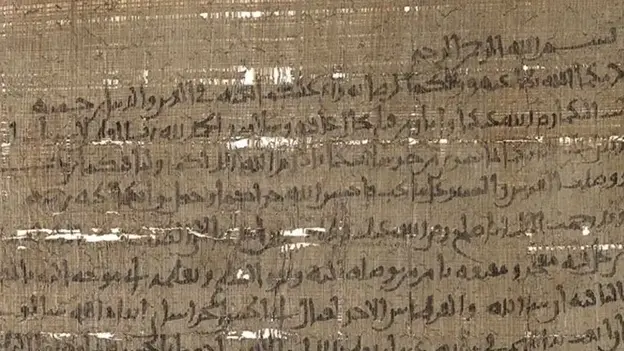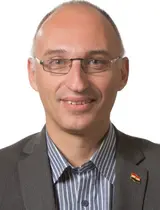Berlin Project
Papyrus to Twitter: Museum Presentations in a Digital Age
Publication
Increasingly rapid technological developments and the growing influence of social media on the production and presentation of knowledge have challenged museums worldwide to keep pace with these transformation processes. Particularly the omnipresence of digital media and communication tools in everyday life have strongly influenced the museum of today: As such, museums nowadays need to represent themselves and their collections in the digital space as well as to offer digital tools and applications in the museum. The project particularly focuses on the latter.
Mobile devices and ever-new technological trends have also significantly changed the expectations and receptive behavior of museum visitors in recent years. Rightly, since visitors can gain new access and perspectives to familiar content by using hybrid and digital presentation formats in the museum. With the help of holograms, for example, temple facades can be virtually reconstructed in the museum. Virtual Reality (VR) allows visitors to immerse into completely new worlds of experience and Instagram Augmented Reality (AR) even brings your favourite museum piece into your living room.
Comprehensive research study on contemporary presentation formats
In a joint research project, AGYA alumna Prof. Dr. Verena Lepper and alumnus Prof. Dr. Tarek Tawfik together with fellow members and alumni investigated new forms of museum presentations in a digital age. The research specifically focused on textual exhibits such as manuscripts, papyri, ostraca or literature, as these objects are particularly challenging in terms of attractive and innovative presentation formats. In a large-scale research study, the Egyptologists and museologists addressed the following questions: How do museums worldwide present literature? Analog and digital? Which concepts exist internationally? And what solutions are feasible and capable of development, especially in the digital age?
To approach these questions, about 100 relevant Arab and German as well as international museums and exhibitions were identified. In a next step, exhibition concepts with a special focus on analog, hybrid and digital presentation formats were analysed. In this context, renowned collections were studied, such as the Neues Museum in Berlin, the Literaturmuseum der Moderne in Marbach, and the Papyrus and Ostraca Collection of Leipzig University Library (Germany), the Bibliotheca Alexandrina and the Grand Egyptian Museum (Egypt), the Louvre Paris (France), the Museo del Papiro in Syracuse (Italy), the Qatar National Library (Qatar), the Literature and Papyrus Museum of the Austrian National Library in Vienna (Austria), the British Museum London (UK), the Metropolitan Museum of Art in New York and the Harvard Museum of the Ancient Near East in Cambridge (USA), the Sharjah Calligraphy Museum and the Louvre Abu Dhabi (UAE), and many more. Based on the collected data, best-practice examples were identified.
Museum experience survey
In addition, the project team conducted a survey among the currently more than 100 Arab and German AGYA members and alumni/ae due to their cultural diverse backgrounds and international museum experiences. The AGYA Museum Experience Survey aimed to gain in-depth insights into the expectations, experiences and aspirations that are associated with a museum visit. By sharing their personal impressions and preferences, the participants contributed to a comprehensive and genuine representation of Arab and German perceptions of the presentation formats used in the museum of the 21st century.
Walkable room installations, video installations, VR, AR and dome projections promote the pleasant feeling of being immerse in the exhibition. Experimental stations foster a way to interact with the exhibition rather than being a passive observer.
In general I am not a big fan of too much didactics in museums and prefer the material to speak for itself.
It is most enjoyable and impactful if it really makes me think about the topic by embracing controversies, displaying multiple perspectives and views and getting into direct interaction and dialogue.
– Voices from the survey –
Trilingual book publication & concept for future AGYA exhibition
The results and observations of the project are about to be documented in an academic book publication. Due to the particular international relevance of the research results, the book is about to be published in a trilingual open access format – German, English and Arabic – by the renowned Berlin publishing house Kulturverlag Kadmos.
At the same time, the project results were so profitable that they will find practical implementation in future exhibitions, such as the AGYA exhibition on the occasion of the 10th anniversary of the academy in 2024 on Berlin's Museum Island. A concept for the future implementation of this special exhibition was developed building on the newly gained insights about innovative and contemporary presentation formats, especially for written and literary sources, or the exhibition architecture.
- Disciplines Involved
- Archaeology, Egyptology, Museology, Oriental Studies, Digital Humanities, Museum Education, Computer Sciences
- Cooperation Partner
- Prussian Cultural Heritage Foundation
- Funding Partner
- Berlin Senate Department for Science, Health and Care
- Affiliated Projects
- Global Berlin in the 21st Century
- About Health and Happiness in Cities – AGYA Podcast Happyopolis
- Arab Berlin: Dynamics of Transformation
- Towards A Sustainable Mobility Future
- Project Title
- Papyrus to Twitter. New Forms of Museum Presentations in a Digital Age
- Year
- 2021
- Funding Scheme
- Berlin Project
- Countries Involved
- Germany, Egypt, Kuwait, Qatar, United Arab Emirates


